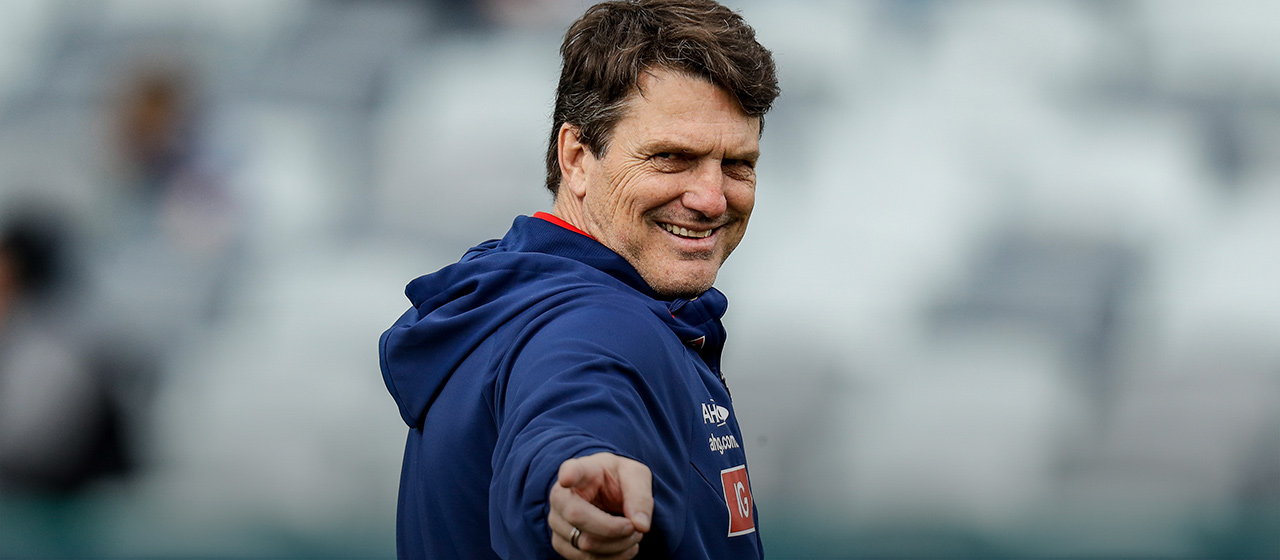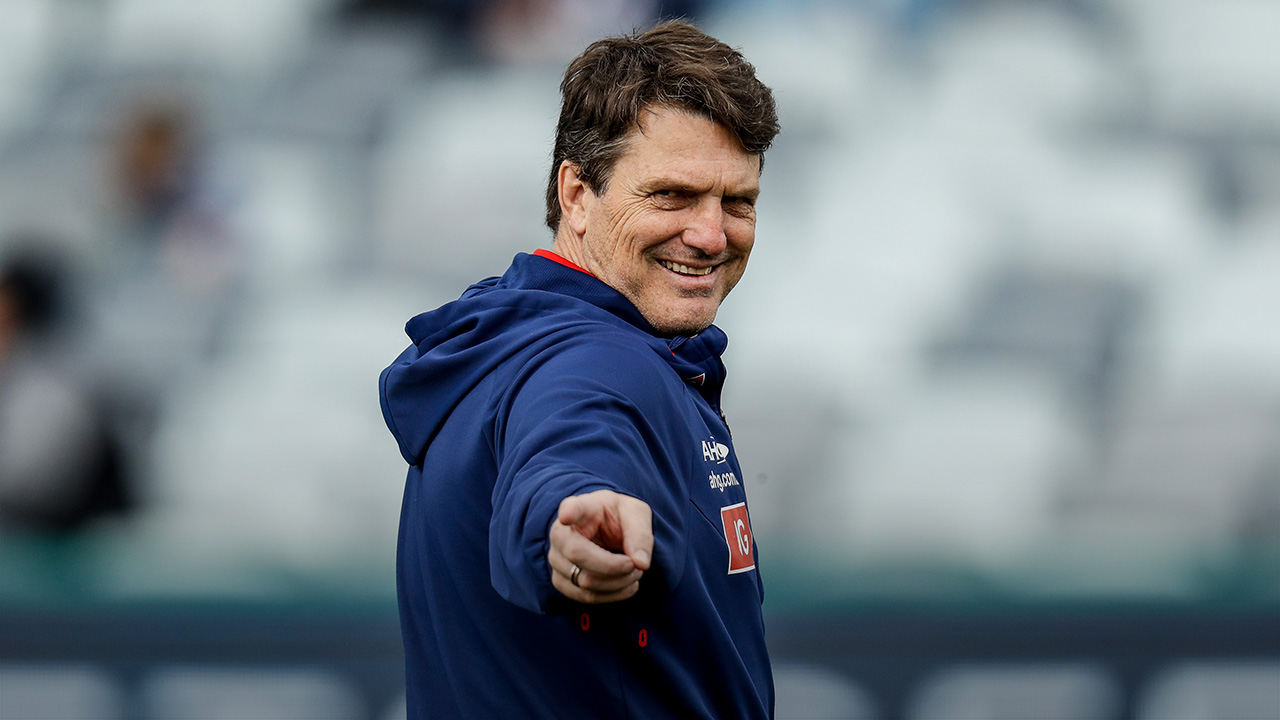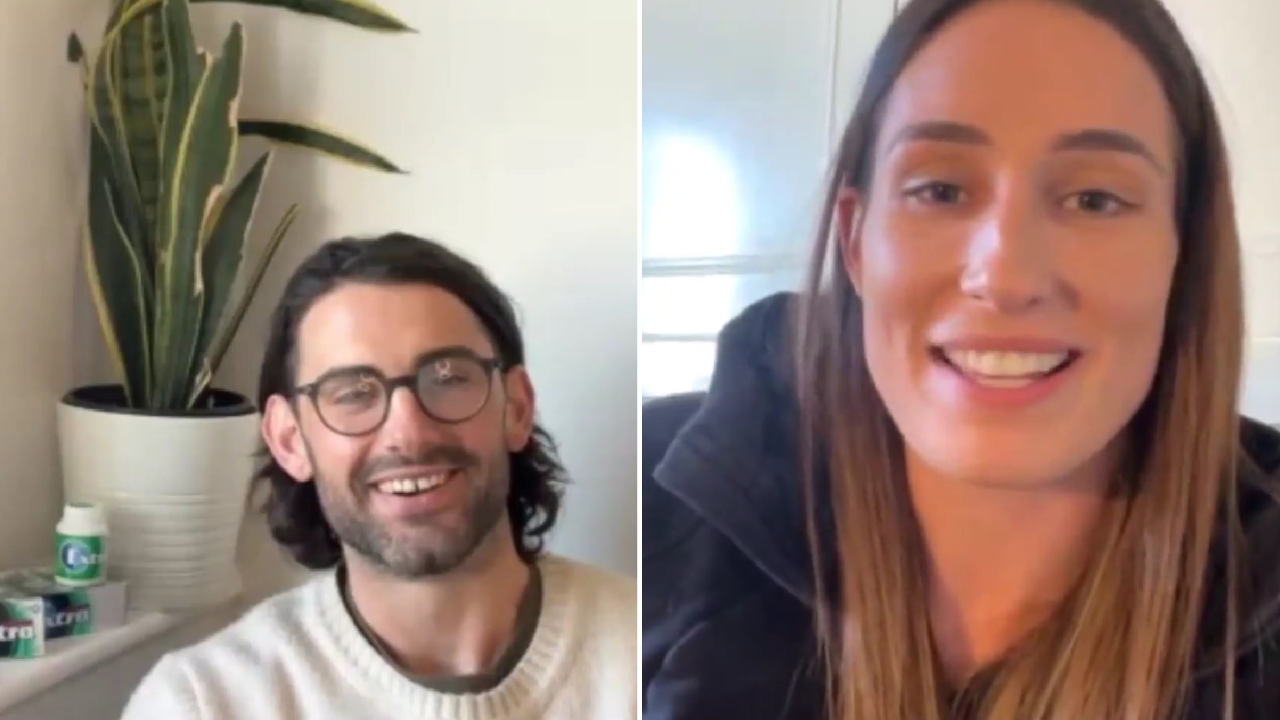AFL
Six steps to improve AFL
I got chatting with a bloke on Waikiki Beach recently. A Collingwood supporter who wanted to talk about the state of the game. ‘Roosy,’ he said, ‘what do you see as the biggest problems facing footy, and how would you fix them?’
I didn’t go to Hawaii to talk about footy. But this got me thinking. About all the meetings I’d been in with AFL executives like Adrian Anderson, Andrew Demetriou and Gillon McLachlan during my years as a coach. About so many conversations focused on the integrity of the competition. What I believed then I’m even more convinced of now: that footy’s integrity is compromised.
The first thing we need to do is to leave the rules alone. There’s been too much tinkering and too much change. So let’s just take a deep breath, let the rules settle, and leave the game as is for the next year four or five years, until the next broadcast deal starts in 2023.
The game itself is in really good shape. It’s even, because the equalisation mechanisms are kicking in after years of compromised drafts. It’s good to watch, and thankfully no-one’s talking about flooding now, or stoppages. So leave it be – and, while we’re at it, keep the interchange system as it is and the Grand Final on Saturday afternoon, too.
But there are problems. There are five issues compromising the AFL that have been bubbling for years, some for decades, and there’s also a relative newcomer to the debate: the need to deal with concussion and its ramifications so that the game’s welfare keeps pace with the players.
DRAW EQUALITY
The draw’s not fair. We all know it. You could be playing the five bottom teams twice. You could be playing the five top teams twice. I don’t subscribe to the 17-5 model that’s been mooted, I think it’s ridiculous, so what is the fairest draw model for the integrity of the competition? What’s fairest is that you play everyone twice, home and away, but you’re never going to have a 34-week season. So what’s the next best option?
The players obviously want to spend less time at clubs, and I actually spoke to a high-profile player last year when I was coaching Melbourne and I said, ‘Would you take less money if there was only 17 rounds?’ He said, ‘Yeah, I would’.
So, 17 rounds. Play each other once: home one year and away the other. Two byes stretch it to 19 weeks, and instead of the pre-finals week off I would have a ‘wildcard’ play-off round where it’s seven-versus-ten and eight-versus-nine. So the bottom eight are finished, teams one to six get the week off, and then, bang, you go into the finals series of eight as we know it.
But there are problems. There are five issues compromising the AFL that have been bubbling for years, some for decades.
That stretches the season for the broadcasters, gives the players the two byes they want, gives the top six an extra bye, but also gives the 10th placed team a sneaky chance to play finals. There will be issues with broadcasters and that’s why it needs to happen at the end of the current TV rights deal – clearly there’s obstacles around how you’d get it done. But one of the biggest impediments to our game now is it started off as 12 teams playing each other twice, so 22 rounds. In an 18-team competition, there are soft draws and hard draws and we need a fairer, more equitable system.
How resistant will the AFL’s broadcast partners be, given that they’re tipping in more than $2 billion over six years for what they get now? If they’re paying what they’re paying now, then they’re going to want 23 rounds, but if they’re saying, ‘Well, we’ll pay less’, and the players say, ‘Well, we’ll take less’, who knows? Clearly there’s some issues around it, but I’d love to think that the powers-that-be can sit down and work it out, because the fixture won’t be fair until they do.

RAISE THE DRAFT AGE
This is one I’ve been very strong about, for multiple reasons. Probably the main one is when kids are doing Year 12 we shouldn’t be asking them to do under 18 championships, TAC Cup, club football, school football, and their final year of school all at the same time. Then suddenly you might be on the plane to Perth when you’ve lived in Ballarat and your Mum and Dad have looked after you and your whole life’s been relocated. I think the minimum draft age needs to be at least a year older.
As it is, the gap that exists between the feeder competition and the AFL has never been greater, so it’s also about bridging that gap. There should be a whole different look at how the feeder competitions are structured – the TAC Cup should perhaps be under 20, the draft age should be 19, and there should be an elite competition, particularly here in Melbourne, with all the best players playing. So that once they get to AFL football, they’ve already had at least a year – some two – out of school, they’ve gone to uni, they’ve seen other things outside of football.
When you’re coming straight out of school, playing AFL footy sounds pretty cool, but if, instead, you’ve started a uni course it might be, ‘Hang on, I actually don’t want to play football, I want to be an architect, I love hanging out with my mates, going to the pub and having a drink on a Friday night, going to the footy on the weekend’. It gives them another experience.
You could set up almost a semi-professional feeder competition with a full-time coach, full-time player welfare, full-time manager. The kid has to be either working or studying to be eligible to play, and then the coach works around his timetable for individual sessions. You’re much better prepared coming into AFL football, also. So it’s really twofold. I haven’t heard a good argument why the draft age should remain the same. In fact, most of what I’ve read is all about how difficult it is for kids to go straight from the school environment into an AFL club. The gap is just too great.
Some will argue that talented young athletes will be lost to other sports. I’ve never subscribed to that. Kids should always have a choice, and if they pick cricket or basketball, good luck to them. I went through that when I was with the Sydney Swans Academy. Callum Mills, Isaac Heeney both stayed, Dan Robinson stayed. So if you provide a good environment, I don’t see it as an issue at all. Maybe one in 1000 kids will choose another sport. Why not cater for the 999 kids instead of the one kid that might leave? It’s crazy.
And the current system is very hard on the kids who miss out on the draft, the late developers, so having another year in a semi-professional system, maybe he puts on five kilos, gets a bit taller. The old under 19 system that I grew up in was just so much fairer, so much better, so much easier for the recruiters, because it’s almost like Darwin’s theory of survival: now you’re actually picking them before they mature, and it’s just such a lottery. The system’s just completely broken, but no-one really wants to fix it.

EVERYONE FOR SECONDS
My next plan would be that every AFL team has a seconds team, which plays before the seniors. Yes, it’s going back to the way it was, because, in this case, that way was so much better. Say you’re a struggling team like Melbourne was a few years ago. The seniors might get beaten by 10 goals, but you’re seeing Petracca and Brayshaw and Hogan and Viney running around in the seconds. It’s like the old days. You leave the MCG going, ‘They’re young, it’s exciting, there’s hope’.
Some of the things that we’ve changed just haven’t worked. We need an older draft age, to bring back the under 19s, have stand-alone VFL teams. That way, the kids from the under 19s can play in the VFL, the AFL teams will have an extra list because they’ll need to fill their seconds team, so there’s a natural pathway. Now the kids just get lost in the system.
Take Casey in the VFL. Casey don’t have a development team anymore; they have the Casey Demons, of which on any given week 18 players might be Melbourne players. Which means that four players are Casey Demons players. The rest have to go back and play with their mates at the local club. How long are they going to stay at Casey if they’re not getting a game? They won’t. So you actually don’t have a football club. It’s the most ridiculous thing I‘ve heard of.
I just think the system is completely flawed and it needs to be fixed. Fast. Because we’re losing a lot of kids. Think how many Dane Rampes there are. He’s an all-Australian defender, and if he hadn’t played for the Sydney Swans seconds when I was in the academy he wouldn’t be playing AFL football today. It’s extraordinary. So how many Dane Rampes didn’t get drafted, went out and played with their mates, and never got a chance to play AFL? As opposed to the under 19 system, where they crept onto the list. Diesel Williams is the greatest example of the old system and Dipper, Michael Tuck, so many of those guys just snuck on a list, snuck through the under 19s, got into the seconds and became stars. Not just average players, but stars of the game. We’re missing out on hundreds and hundreds of AFL players now.

IT’S A KNOCKOUT
This is a newer issue, but also a real one, with only one solution: there needs to be a concussion sub. Teams are losing players early in games, and the outcomes of those games are potentially being affected. So if we’re going to rule players out from returning to the field, and I think we’re all supportive of that, how do we then not affect the outcome of the game?
The players need to be protected, so the rules need to keep up. You can’t bring in this new protocol on concussion, which potentially takes away a player, and not think through how that impacts the game. If you’ve got a player that gets concussed who would have played on five years ago, but now he’s off the ground five minutes into the first quarter, you have to then say, ‘Five years ago it was 22 versus 22. Now it’s 21 versus 22. We need to protect the integrity of the game on the back of the fact we’re all supportive of protecting the health of the player.’
There needs to be a concussion sub. Teams are losing players early in games, and the outcomes of those games are potentially being affected.
It would obviously need to be carefully managed. The AFL doctor in conjunction with the club doctor would make the decision to de-activate the player; there might need to be a cut-off point at half-time, or three-quarter-time. Or it might have to be a player that’s already played a minimum of half the game time in the VFL – whatever it might be. And you’d probably have to limit it to one sub per team for now, with the option of modifying it later.
For me, the benchmark is always the Grand Final. If Tommy Bugg had knocked out Callum Mills in a Grand Final, do you want to disadvantage a team that’s had a player knocked out behind play? The Swans might be three goals up and Melbourne storm home in the last five minutes to win the game. Tommy Bugg gets six weeks, Melbourne win their first premiership in 50-something years, and Sydney are left licking their wounds. The integrity of the game is compromised because the rules have fallen behind.
FULL-TIME UMPIRES
As an industry we’ve moved so far forward. When I first started I went to school, and then I went and worked at the AMP, but then in the mid-90s I started as a full-time professional. Umpires are now so integral to the running of the game that they, too, should be full-time.
I know people say, ‘What would they do?’. Well, that was the same argument we had about players and coaches. They’d be going out to do clinics, helping other umpires, getting around to clubs, as well as sitting down and reviewing their game tapes … it would look almost exactly the same as what an AFL player’s week does. What’s illogical to me is you’re asking players and coaches to prepare every week for their opposition and the umpires aren’t doing the same level of preparation. So I’d love to see that happen.
(I’ve also noticed that umpires and players and coaches don’t have relationships any more. We used to have the after-match where you’d have a chance to say to Glenn James and Peter Cameron, ‘That was a shockin’ decision’, and they’d be, ‘Yeah, yeah, I know’. So you actually humanised the whole process.)
You might have some sort of academy for the field umpires, in particular, where they study for a university degree at the same time. You’d have to increase their salary, and make it worth their while, but then it holds them more accountable. I think we have to protect our umpires, but it’s also a way of promoting umpiring as a job.

Although the standard needs to rise, it’s important to let the laws settle because we’re making it so hard for the umpires with these constant changes. In fact, my idea is that there would eventually be a set of interpretations, created and clearly articulated by the umpires, driven by Peter Schwab and Hayden Kennedy, and they would explain the decisions publicly on a weekly basis.
There would be umpires’ press conferences, because why is an umpire not similar to a coach? Alastair Clarkson gets interviewed and says, ‘Last week we thought we were really poor at that, this is what we need to work on.’ What’s wrong with an umpire saying, ‘This week we felt we didn’t adjudicate the holding the ball rule very well’. It’s a secret society, so make it more open, more transparent.
I feel for the umpires, because we’ve made so many changes to the rules, so many interpretation changes, and it’s so hard to umpire the game. I think we need to make it easier for the umpires as a collective so they can really start to drive the interpretations and explain to the public, take responsibility for what those rules are. We need to get rid of the laws of the game committee completely, and let the umpires drive where they want the game to go, in conjunction with the AFL. They’re the full-timers. This laws of the game committee comes in once every blue moon and tampers with the game. Enough. Let the full-time people – full-time umpires, full-time staff – create it.
DRAFT LOTTERY
We’ve been talking about tanking for years. About priority picks, etc, etc. I still genuinely believe that whether you call it tanking or something else, it’s time to end the discussion. But you can’t have it both ways.
You can say, ‘If the clubs want to manage their team and winning is not a priority, that’s up to them’. If you want to take that approach then that’s fine, leave things as they are. But we know that more than one team has tanked. It wasn’t just Melbourne; they were just the only ones that got caught.
For three years the AFL said, ‘There’s no tanking, there’s no such thing’, and then all of a sudden we penalise Melbourne footy club in the same year that maybe five teams were doing exactly the same thing. So we either say that once it gets to the back-end of the season, if teams do not see winning as a priority, then so be it. Or we take that whole debate away and say we always want teams to have the four points as their No.1 objective, so we need a draft lotto.
I don’t necessarily have a view either way about what’s best, other than to say if you do want to stamp it out, which the AFL clearly do because they punished Melbourne, then change the system. You can’t leave it up to the clubs, because there’s a big difference between pick one and pick five. There’s a big difference between pick two and pick six, so the reality is there is an incentive to lose at the end of the season. Once there’s an incentive to lose, clubs will, ahem, ‘manage their lists’ accordingly.
For three years the AFL said, ‘There’s no tanking, there’s no such thing’, and then all of a sudden we penalise Melbourne footy club in the same year that maybe five teams were doing exactly the same thing.
How would it operate? Again, that’s where the debate comes in, but you would at least go to the bottom four teams and you’d have a certain amount of balls, similar to the NBA, really, but you’ve have to do some research on what the number is. Is it four, is it five, is there a cut off for number of games won, if you only win three games do you start with 100 balls, for example? But take away the reward for finishing on the bottom of the ladder, because if you don’t know where you’re going to finish, clearly you have to keep on playing until the end of the season because you’re not playing for a specific draft pick. You might be playing for a few more balls in the lottery, but it’s very different.
It’s a debate that’s been raging for decades and the AFL doesn’t want to do anything about it. To people who say that tanking doesn’t exist, I say this: playing at the end of the season to maximise your list management does exist. Call it whatever you like because, clearly, it exists. When players and coaches run out on to the field, do they try 100 per cent? Absolutely. But does list management take place? Absolutely.
More about: Concussion | Paul Roos | Sydney Swans | VFL






 Load More
Load More